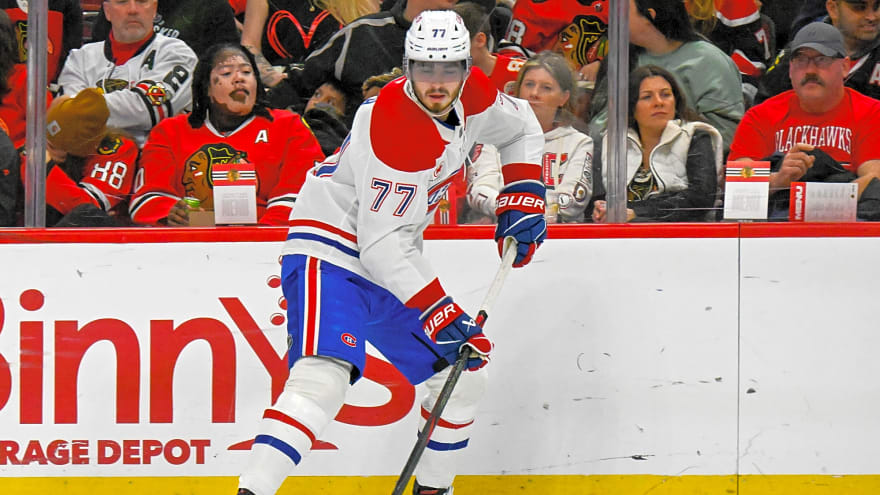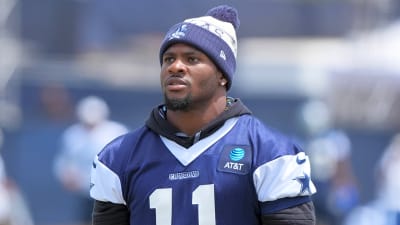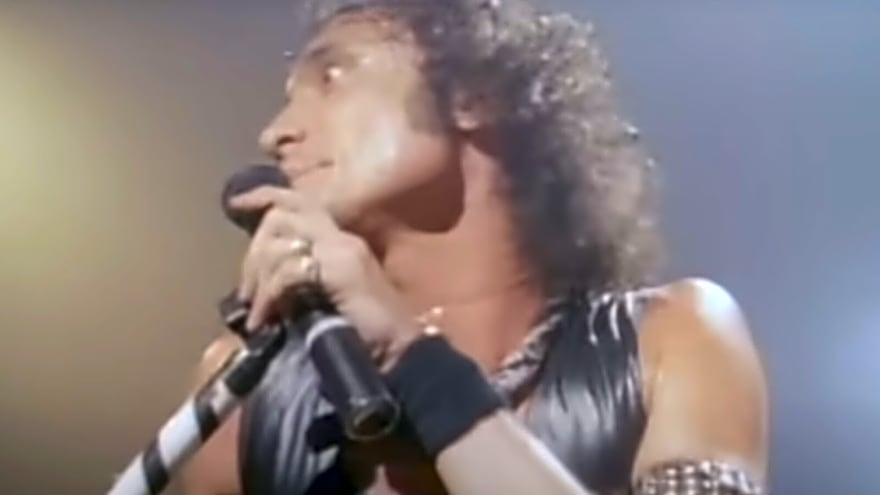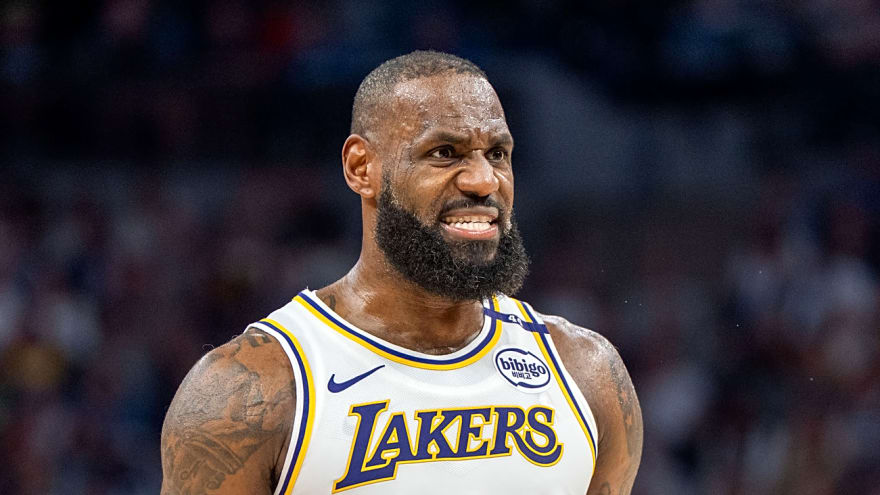
Caitlin Clark has electric first quarter in return from injury
Indiana Fever star Caitlin Clark returned from her quad injury on Saturday against the New York Liberty, and let's just say she did not look the slightest bit rusty.
Clark scored 14 points in the first quarter at Gainbridge Fieldhouse in Indianapolis, Ind., and the majority of them came with under two minutes remaining. Clark pulled up and drained a three-pointer from 33 feet out with 1:26 remaining in the first quarter, and that was just the start of a mini-explosion.
Clark made three three-pointers in a span of about 44 seconds.
Caitlin Clark just scored 9 points in less than 45 seconds pic.twitter.com/SWBk9PhI4g
— Indiana Fever (@IndianaFever) June 14, 2025
Indiana trailed 21-15 before Clark hit her three-pointer with 1:26 remaining in the quarter. The game was tied less than a minute later.
Clark was sidelined for five games with the quad injury. The Fever went 2-3 in those games. Clark entered Saturday leading Indiana with 19 points and 9.3 assists per game.
The 2024 WNBA Rookie of the Year, Clark is known for being able to hit shots from just about anywhere on the court. She wasted very little time doing just that in her return to action on Saturday.
More must-reads:
- Caitlin Clark has interesting quote about Tyrese Haliburton
- Wings' Paige Buckers sets new career-high in Caitlin Clark-esque performance
- The 'Most points in a WNBA season' quiz
Breaking News
Trending News
TODAY'S BEST

Are Lynx clear championship favorite after blockbuster trade?
The Minnesota Lynx didn't need roster upgrades after a 24-5 start, but that hasn't stopped them from doing so. The Dallas Wings announced Sunday they dealt guard DiJonai Carrington to the Lynx for guard Karlie Samuelson, forward Diamond Miller and a 2027 second-round pick. Dallas waived center Teaira McCowan to complete the trade. The Lynx, who had the WNBA's best record entering Sunday, have a strong chance to win their fifth championship. FanDuel Sportsbook gives them +165 title odds, tied with the New York Liberty (17-10) for the league's best. Acquiring Carrington improves Minnesota's prospects. In 39 games with the Connecticut Sun in 2024, the 27-year-old guard was named the league's Most Improved Player after logging career highs in points (12.7) and steals (1.6). She also earned a first-team All-Defensive nod. Carrington joined Dallas in a four-team trade in February. The 2021 second-round pick played 20 games for the club, averaging 10.4 points, 1.1 steals and 1.8 assists. Carrington should make Minnesota's defense even more stingy. The Lynx allowed the league's fewest points (75.4) through 29 games. Minnesota forward Napheesa Collier, a league MVP candidate, is tied for third in the WNBA in steals (1.8) through 26 games. She and Carrington could form a tandem that flusters opposing offenses. The primary concern regarding the guard is her high turnover rate. Per the WNBA's website, Carrington's turnover ratio (15.4) ranks 127th among 173 eligible players. (This stat measures how often a player loses the ball relative to the number of possessions they have.) However, the figure could improve with a better supporting cast. Except for rookie guard Paige Bueckers, Dallas lacks star power. The Wings (8-21) had the league's third-worst record entering Sunday. This likely contributed to Carrington forcing the issue offensively. The Liberty beat the Lynx in five games in last season's WNBA Finals. Perhaps Carrington will help Minnesota get revenge if it faces New York again in the championship.

Three potential landing spots for disgruntled Bills RB James Cook
Superstar pass-rusher Micah Parsons and the Dallas Cowboys aren't the only ones involved in a contract dispute. Buffalo Bills star running back James Cook is seeking a pay raise as he heads into the final year of his rookie contract. When asked Sunday why he wasn't practicing, Cook responded: "Business." ESPN insider Adam Schefter noted on Monday the hold-in by Cook, the 2022 second-round pick (63rd overall) who is unhappy with his contract situation. For now, Cook's future with the Bills is in question, so let's look at three teams that should be lighting up general manager Brandon Beane's phone in an attempt to pry him from Buffalo. Chicago Bears GM Ryan Poles must continue to add weapons around second-year QB Caleb Williams. Per NFL.com, Chicago ranked 25th in the league in rushing yards (102 per game) and 29th in yards per carry (four) last season, which is not good enough to support a young QB. RB D'Andre Swift (253 carries, 959 yards rushing, 3.8 yards per carry) is a solid option but was inefficient last season in the workhorse role. Cook, who rushed for 1,009 yards last season (4.9 per carry), is an efficient runner who could balance this offense. Chicago has the draft capital and salary-cap space (roughly $13M, per Over The Cap) to get a deal done, particularly if it were to send Swift back the other way. Arizona Cardinals Their offense could reach new heights with a dynamic running back like Cook. James Conner, who rushed for a career-high 1,094 yards last season, has been a solid lead runner in Arizona over the past four years, but the 30-year-old could use help. Conner is a power back. Speedster Cook would bring a different style and create an explosive one-two punch with QB Kyler Murray. Per Over The Cap, Arizona has roughly $35M in cap space and all its own draft picks to get a deal done. It's a move it must consider to compete in the loaded NFC West. Minnesota Vikings What better way is there to aid rookie QB J.J. McCarthy than by trading for a high-end running back? Minnesota has perhaps the best receiving groups in the NFL, so improving the run game could make this offense unstoppable. Running back Aaron Jones will turn 31 on Dec. 2, so Cook — who will turn 26 on Sept. 25 — would be an upgrade. Free-agent RB Dalvin Cook, who has a similar running style to James, his brother, rushed for 1,173 yards with the Vikings in 2022. The Vikings have draft picks to make a solid offer, and while their cap space will get tight in 2026, they can find ways to wiggle their way around it. Perhaps Buffalo would be interested in Jones being a part of the deal to help its backfield in the short term.

Knee operation: Kirby Dach not yet back on his feet
Two years ago to the day, Canadiens fans were optimistic about Kirby Dach’s future in Montreal: the 6’4 forward had just collected 38 points in 58 games – in his first campaign in Quebec – and many wondered whether Dach had a better chance of establishing himself as a first NHL center than captain Nick Suzuki. The past 730 days have proven otherwise, but that’s not the point this morning. Since joining the Canadiens, Dach has earned a reputation as a fragile player. Virus, shoulder, upper body (concussion?), lower body, knee(ACL and MCL), knee again… Let’s just say that injuries haven’t spared Dach since he arrived in Montreal. In fact, injuries haven’t spared Dach since he started playing hockey. He has never played more than 70 games in a single season, and has only broken the 60-game barrier three times in nine junior or pro seasons. Last February, Dach underwent a second operation on his right knee in the space of 18 months. Jeff Gorton and Kent Hughes may tell us that Kirby Dach is fine,but we still have our doubts. Especially whenyou consider that, with the Canadiens’ recent additions and departures, Kirby Dach is still the team’s second center on the organizational chart. content-ads]Last week, I wondered where Kirby was ? We’ve seen plenty of Habs players skating at the CN Complex this summer, but not Kirby Dach. And I had to work like a monk to catch a glimpse of him in a video filmed at Nick Suzuki’s wedding! Yesterday, I was told that Kirby Dach was spending the summer in Edmonton with Kaiden Guhle – Dach is from Saskatchewan and Guhle is from Alberta – and that Dach was still in rehab. I repeat: five months after his most recent knee operation and some 40 days before the start of practice camp, Kirby Dach is still not recovered and ready to play. Good informants spotted him in an Edmonton gym doing squats with loads that look like the ones I used to take when I went to Econofitness, not the ones an NHL player uses [content-ads]This explains it: when he came to Montreal for his captain’s wedding, Kirby Dach couldn’t – or wouldn’t – skate with his teammates in Brossard. It’s worth noting that Dach is also very quiet on social networks – his last post was in November 2024 – probably in an effort to be forgotten… to go unnoticed. Spending the summer in Alberta, rather than in Montreal (with his chums at Osheaga), makes sense, when you think about it…Let’s just say that the chances of Dach starting his season at the same time as everyone else in two months’ time are pretty slim, which is cause for concern for those hoping to see the Canadiens in the playoffs in 2026. Yes, the Kirby Dach problem would be solved if a guy like Mason MacTavish-good offensively, defensively, physically and in the face-off circle-came to Montreal, but let’s just say that the odds of that happening this summer are very low. And you can’t make plans with very improbable things![spacer title=’Prolongation’]Matthew Tkachuk, who was injured last winter while throwing down the gloves at the 4 Nations tournament, underwent surgery last month (hernia and adductor). According to the latest information from Elliotte Friedman, Tkachuk could return to action just before the Olympic Games. Let’s hope Kirby Dach doesn’t have to wait as long as Tkachuk.

Zero RB Strategy Explained: Top Fantasy Football Targets for 2025
If you’ve participated in fantasy football for a few years, chances are you’ve heard discussions about “Zero RB.” But what does the zero running back strategy actually mean, and how might it benefit fantasy managers on draft day? The following is a comprehensive look at the Zero RB approach, as well as players suited to this draft philosophy whom you can consider targeting for the upcoming season. Don't forget to sign up for your fantasy football league on Yahoo Sports! What is Zero RB Strategy? Although its name suggests otherwise, the Zero RB strategy doesn’t require fantasy football managers to entirely disregard the running back position during drafts or leave those roster spots empty. Typically, the Zero RB approach involves focusing on other positions in the early rounds, building a strong group of wide receivers and locking in top options at quarterback and/or tight end. While opinions differ on the exact round where Zero RB draws the line, the strategy generally means waiting until at least the fifth round or beyond to select your first running back. Running back is one of the most unpredictable positions throughout the season, largely due to injuries. Backup players often step into starting roles and deliver significant fantasy production, no matter their perceived talent. By spending minimal draft capital on premium running backs and instead targeting late-round options with breakout potential, the Zero RB strategy aims to capitalize on this volatility. Use promo code YARD20 for $20 off your FantasyLabs fantasy football subscription! Pros of Zero RB Strategy There are several appealing advantages to the Zero RB strategy, making it especially popular among bold fantasy football drafters. One clear benefit is the opportunity to build greater strength at other positions when running backs are bypassed early. This approach lets fantasy managers more easily prioritize the single starting spots at quarterback and tight end. Instead of struggling to fit high-upside players like Brock Bowers in the second round or elite quarterbacks such as Lamar Jackson, Josh Allen, or Jalen Hurts into your early draft plan, the Zero RB method actually encourages you to target these difference-makers. The positional edge provided by top quarterbacks and tight ends is tempting, but many fantasy players hesitate to spend early draft capital on them. Zero RB, however, expands your flexibility and allows you to load up on these potential game-changers. Injuries are another key factor in favor of this strategy. Running backs are more prone to injuries than most other positions. Every season, several first-round backs land on injured reserve, sinking their fantasy managers’ title hopes along the way. Even elite talents like Christian McCaffrey have endured significant mid-season injuries in multiple years. Zero RB aims to avoid the risk of early picks being wasted on running backs and instead focuses on investing in positions with fewer injury risks. The strategy also aims to take advantage of the inherent volatility at running back—when injuries happen, backups often step into sizable workloads, which rarely occurs at wide receiver. Late-round backs can produce major fantasy value, and with enough lottery ticket picks, you could land on a league-winning player at a bargain. For example, last year Chase Brown emerged from a crowded backfield in Cincinnati to deliver a top-10 PPR season. Of course, there are drawbacks. For starters, you’ll need those late-round running backs to outperform expectations to have a real shot at a fantasy championship. Relying on backups and timeshare players fills your bench with potential options—or weekly headaches as you try to decide who to start. Often, a Zero RB draft means your week one running backs look weak on paper. That’s part of the plan: you hope your other positions are stacked and that, as injuries strike, you’ll be able to improve your running back situation. The greatest risk may come if your top quarterback or tight end suffers a major injury. Since Zero RB teams use early picks to secure stars at these positions rather than focusing on depth, losing one can be devastating—especially if your late-round running backs can’t pick up the slack. With this approach, your path to victory relies on both health for your top picks and luck in finding running back breakouts as the season unfolds. Dominate your Best Ball and season-long fantasy football leagues with FantasyLabs’ brand-new app that's available in the Apple App Store and on Android! Cons of Zero RB Strategy For a strict Zero RB approach, many fantasy managers recommend holding off until at least the fifth round before selecting your first running back. Of course, there isn’t a fantasy football overlord who will punish you for choosing someone like Kenneth Walker III in the third or fourth round. Ultimately, the smartest draft strategy is to capitalize on whatever value is available during your draft. If an outstanding running back falls into the early rounds, it’s perfectly reasonable to abandon the Zero RB philosophy. However, for those committed to following the strategy no matter what, the usual guidance is to build out your starting wide receivers, quarterback, and tight end before targeting a running back. Top Zero RB Targets in 2025 By the fifth or sixth round, there are still several starting running backs on the board who can offer steady production, even if they aren’t likely to deliver elite numbers. Here are some mid-round options to consider as potential RB1s when using a Zero RB strategy: Isiah Pacheco, RB, Kansas City Chiefs Returning from an injury-filled 2024, Isiah Pacheco enters this season healthy and looks significantly undervalued as a sixth-round pick in fantasy drafts, considering the upside he’s shown during his career. After being chosen in the seventh round of the NFL draft, Pacheco finished 15th in PPR scoring in 2023 and appeared poised for a breakout campaign last year before injuries struck. He’s in a strong position to outpace backfield competitors Kareem Hunt and Elijah Mitchell. Kaleb Johnson, RB, Pittsburgh Steelers Rookie running backs are appealing Zero RB selections in the mid-rounds thanks to their potential for a wide variety of outcomes. Former Iowa back Kaleb Johnson is expected to step right into the early-down role left open by Najee Harris and has a chance to challenge Jaylen Warren for more involvement in the passing game. Best Ball rankings from some of the top industry experts are also available on FantasyLabs. Late Round RB Targets in 2025 Keep in mind, the objective is to fill your bench with high-upside running backs in the later rounds of the draft. Here are several late-round fliers who could develop into weekly RB1 options as the season progresses: Cam Skattebo, RB, New York Giants Yet another rookie back with significant upside, Cam Skattebo has earned rave reviews out of Giants training camp. The Arizona State alum was known for his ability to punch in touchdowns near the goal line in college and seems likely to step into valuable scoring situations right away. If Skattebo can also contribute as a receiver, he has the potential to be an outstanding late-round find. While Tyrone Tracy Jr. and Devin Singletary have both shown flashes during their careers, neither should deter fantasy managers from taking a chance on Skattebo. Jordan Mason, RB, Minnesota Vikings Jordan Mason, once a backup for the 49ers, could see improved touches now that he’s with Minnesota. While Aaron Jones currently leads the Vikings’ backfield, Mason stands to claim a larger role, especially with Jones Sr. now 30 years old. Minnesota bolstered their offensive line in the offseason and is expected to rely more on the ground game as rookie J.J. McCarthy steps in as starting quarterback. Should Jones miss time, Mason would have the chance to break out as a top fantasy running back.
Customize Your Newsletter
 +
+
Get the latest news and rumors, customized to your favorite sports and teams. Emailed daily. Always free!






























